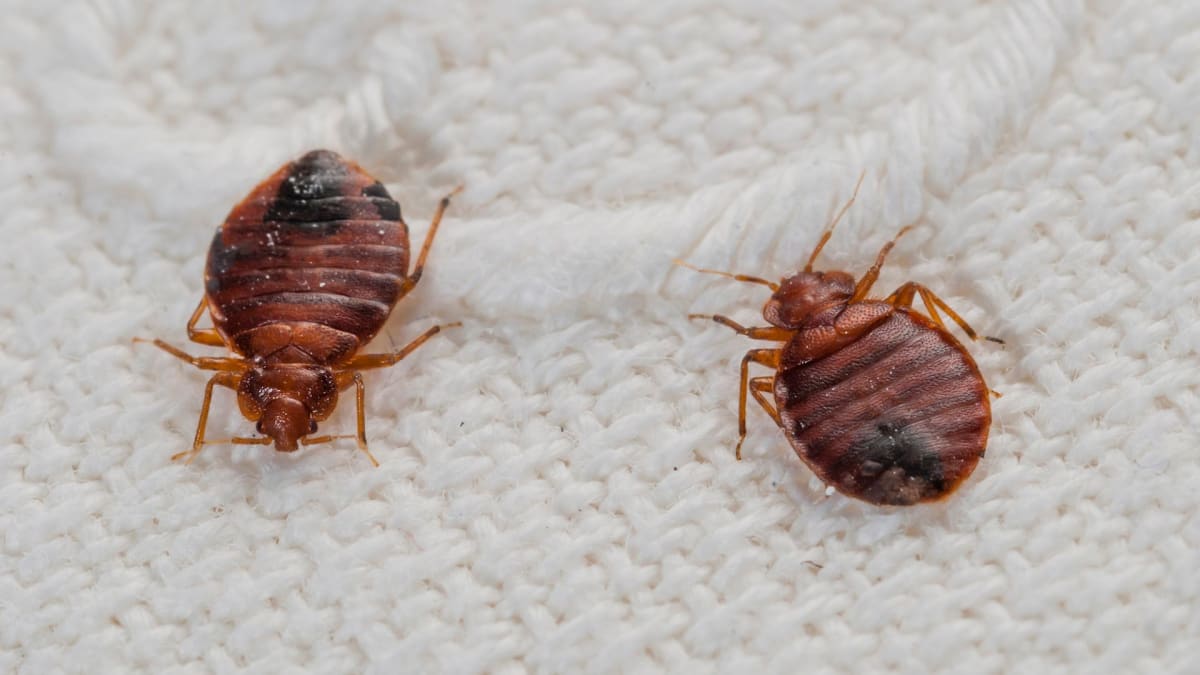Exploring the Science Behind Bed Insect Warm Treatments as a Sustainable Parasite Administration Approach
One such approach that has acquired traction in current years is the use of warm therapies to fight bed pest infestations. The ins and outs of exactly how heat efficiently gets rid of bed pests and the broader effects for sustainable pest administration practices make this a topic worth discovering better.
Bed Insect Heat Treatment Refine

Thermal Fatality Point for Bed Insects
Exposing bed bugs to elevated temperatures beyond their thermal tolerance array is essential for attaining effective obliteration in heat treatment processes. The thermal fatality factor for bed insects refers to the temperature at which these pests can not survive. Research study suggests that bed bugs begin to die when exposed to temperature levels over 113 ° F(45 ° C) for a sustained period. As the temperature enhances, so does the death price of bed insects. At around 118 ° F(48 ° C ), bed bugs begin to pass away quickly, with a mortality rate of nearly 99% within minutes of exposure. This demonstrates the level of sensitivity of bed insects to high temperature levels and highlights the efficiency of heat treatments in eliminating infestations. By getting to and maintaining temperature levels over the thermal death point for bed insects, bug monitoring experts can make certain detailed removal of bed bug populaces, consisting of hard-to-reach locations where chemical therapies might be less effective. Comprehending the thermal death point for bed bugs is essential for executing effective heat treatment techniques and achieving sustainable insect management end results.
Benefits of Warm Treatments
Having established the critical thermal fatality point for bed pests, it is critical to now discover the substantial advantages that heat treatments use in properly removing these resistant insects. One of the key benefits is that warm can pass through deep right into fractures and holes where bed pests conceal, making sure that also the most hard-to-reach areas are heated to lethal temperatures.
Moreover, warmth therapies are non-toxic and eco-friendly, making them a sustainable insect monitoring approach. Unlike chemical pesticides, warmth therapies do not leave dangerous deposits that can position dangers to human health or the setting. This facet is particularly essential in delicate settings such as medical facilities, institutions, and domestic locations where chemical use might not be preferable.
In addition, warm treatments have a high success price in getting rid of bed bug infestations in a solitary therapy, decreasing the requirement for multiple gos to and reducing disruption to residents. This efficiency not just saves money and time yet also gives satisfaction to those dealing with bed pest troubles.
Effectiveness of Warmth Therapy

Heat therapies have the added benefit of killing bed bug eggs, which are frequently resistant to conventional chemical therapies. Generally, the efficiency of heat treatments in getting rid of bed insect problems makes them a lasting and trustworthy parasite monitoring strategy.
Sustainable Bug Monitoring Benefits
Executing sustainable insect monitoring techniques provides long-lasting advantages for both the environment and public health and wellness. By utilizing techniques such as warmth treatments for insect control, we can minimize the reliance on harmful chemical pesticides that can have unfavorable impacts on ecological communities and human health and wellness - DC exterminator. Lasting bug monitoring methods aid in protecting biodiversity by targeting specific bugs without damaging non-target microorganisms, consequently preserving a balanced environment
In addition, lasting pest administration methods contribute to the overall health and health of the general public. By decreasing direct exposure to toxic chemicals used in typical parasite control approaches, warm treatments supply a more secure alternative for pest management in residential, commercial, and public rooms. This decrease in chemical use also helps in avoiding pesticide residues from contaminating water, air, and dirt, securing environmental high quality.
Conclusion
In final thought, bed bug warmth treatments have actually been shown to be a efficient and sustainable bug find out here now monitoring approach. The thermal fatality factor for bed bugs makes them prone to warmth therapies, which have many benefits over typical chemical therapies. The efficiency of heat therapies in getting rid of bed insect infestations while decreasing environmental impact highlights the capacity of this method as a lasting solution for bug control.
The bed bug warm therapy process includes elevating the temperature level within ravaged areas to a degree that properly eliminates bed insects and their eggs. By getting to and keeping temperature levels over the thermal death point for bed pests, bug administration experts can make certain thorough removal of bed insect populations, consisting of hard-to-reach areas where chemical treatments may be much less reliable. One of the main advantages is that heat can pass through deep into splits and gaps where bed insects hide, guaranteeing that even the most hard-to-reach areas are heated to lethal temperature levels. Unlike chemical therapies that might leave behind resistant populaces, heat therapies offer a safe and ecologically friendly solution that can penetrate deep right into furniture, wall surfaces, and other hard-to-reach areas where bed insects conceal.
The thermal death factor for bed insects makes them susceptible to heat treatments, which have many advantages over conventional chemical therapies.